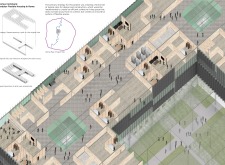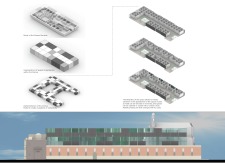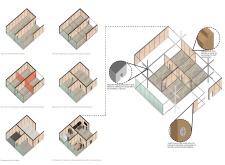5 key facts about this project
Modular Configurations and Flexibility
A key characteristic of Domus Commune is its modular approach to residential units. The design is predicated on the idea of spatial adaptability, allowing residents to reconfigure their living environments based on personal and collective needs. This flexibility supports a variety of lifestyle choices, from individual living to family arrangements or communal setups. The use of movable walls and adjustable partitions is integral to this concept, enabling a dynamic household environment that evolves over time.
Materiality and Structural Considerations
The choice of materials plays a significant role in both the aesthetic and functional aspects of the project. The primary materials include wood, glass, steel, and concrete. Wood is utilized for partition walls, providing warmth and a cohesive look, while large glass panels enhance natural light and visibility between interior and exterior spaces. Steel frameworks are employed for structural integrity, reinforcing the modular design. Concrete serves as a foundational material, ensuring durability and stability. This combination of materials not only fulfills practical requirements but also optimizes energy efficiency within the housing units.
Innovative Community Spaces
Domus Commune is distinguished by its focus on shared community spaces, which are strategically integrated into the overall layout. These communal areas encourage interactions among residents, fostering a sense of collective identity. Features such as communal gardens and multipurpose common rooms are designed to facilitate social connectivity while maintaining a balance between private and public spaces. The design approach reflects an understanding of contemporary urban lifestyles where community-oriented living is increasingly prioritized.
For further insights into the architectural plans, architectural sections, and architectural designs that drive the Domus Commune project, readers are encouraged to explore the detailed project presentation. This exploration will provide a more comprehensive view of the innovative architectural ideas that make this project a notable example of modern collective housing.


























